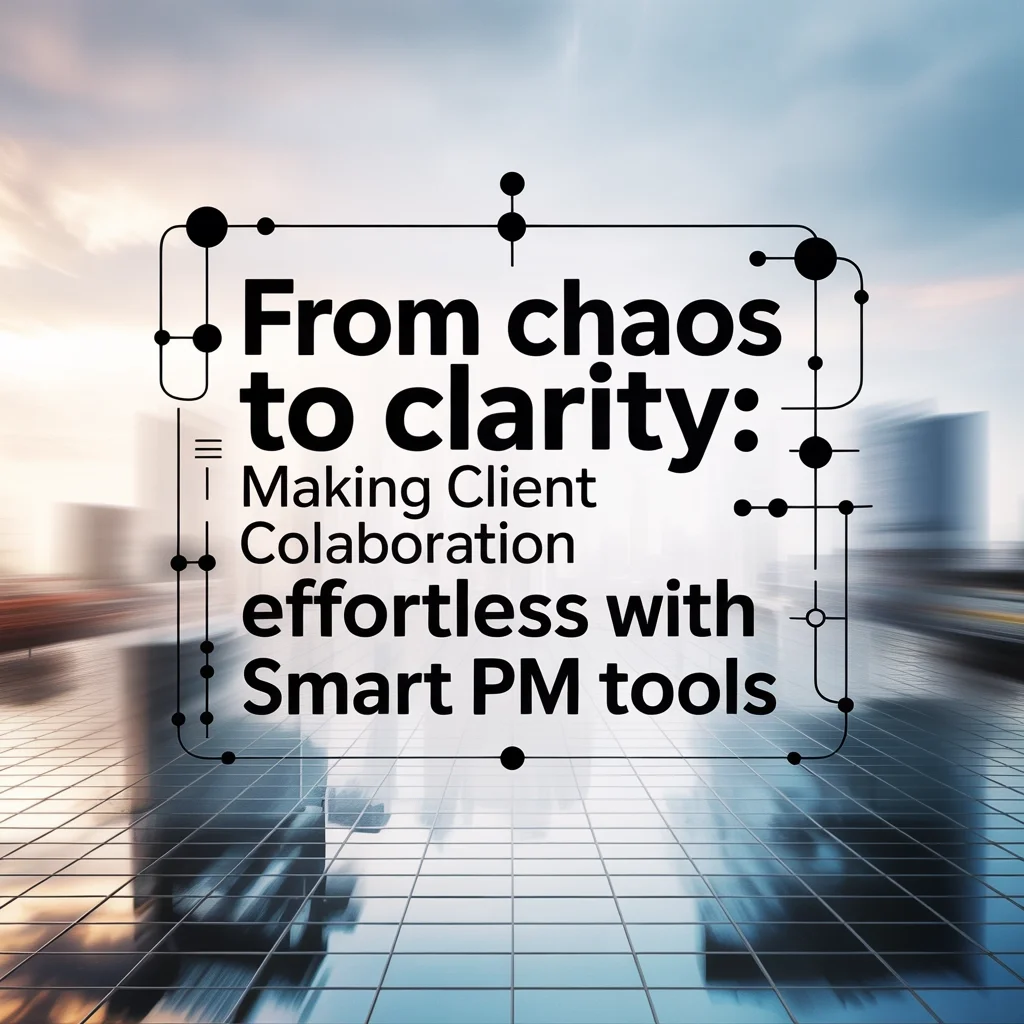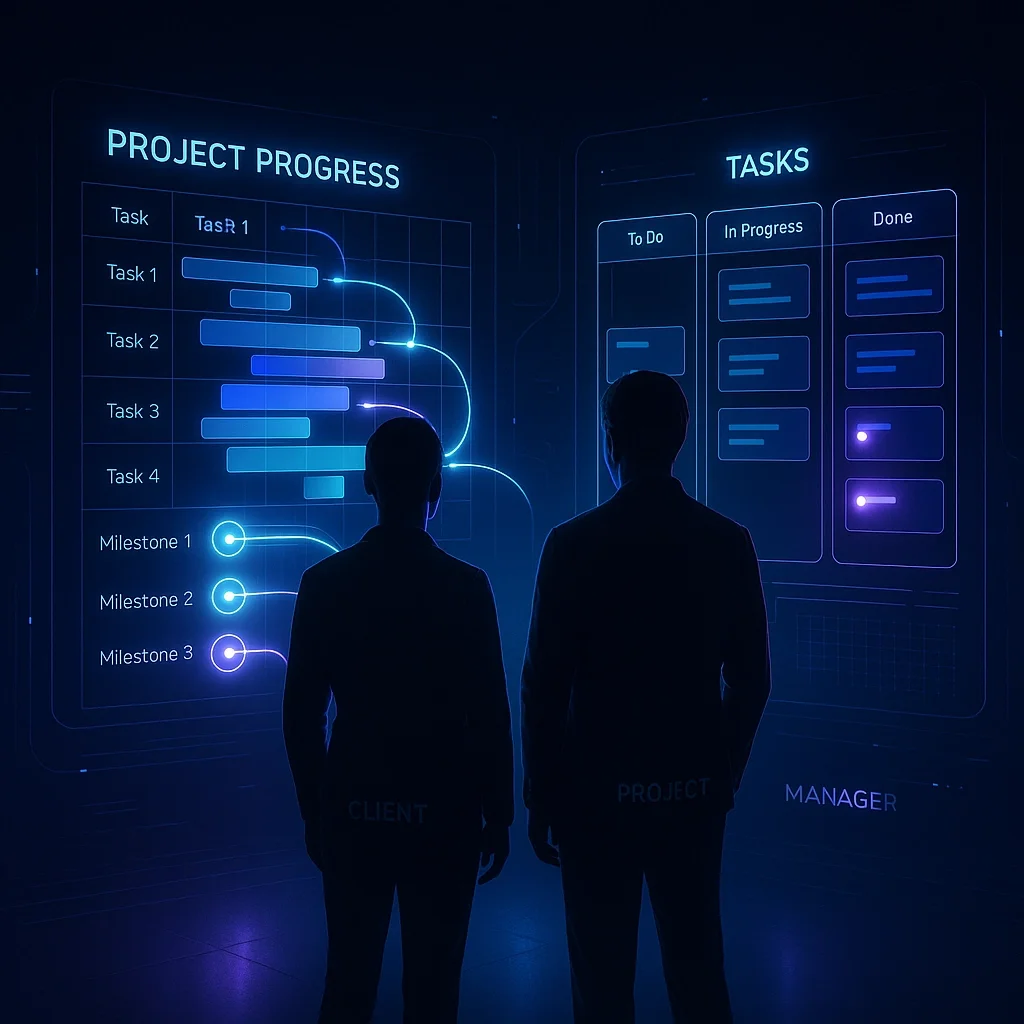From Chaos to Clarity: Making Client Collaboration Effortless with Smart PM Tools
The Client Collaboration Challenge
Let's face it—working with clients can sometimes feel like herding cats. Scattered emails, conflicting feedback, missed deadlines, and the dreaded "Did you get my message?" follow-ups. Sound familiar?
At Threshold Breaker, we've seen how these communication gaps can derail even the most well-planned projects. The good news? Today's smart project management tools are specifically designed to transform this chaos into clarity.
Why Traditional Client Communication Falls Short
Before diving into solutions, let's identify what makes client collaboration so challenging:
Information silos: Critical updates buried in email threads or chat histories
Version control nightmares: "Is this the latest revision?"
Approval bottlenecks: Waiting days for simple sign-offs
Visibility gaps: Clients asking for status updates you've already provided
Context switching: Jumping between email, messaging apps, and PM tools
These friction points don't just slow projects—they erode client trust and team morale.
The Client Collaboration Transformation
Smart project management tools solve these challenges through centralized workspaces where teams and clients connect, communicate, and collaborate seamlessly. Here's how they turn chaos into clarity:
1. Client Portals: The Single Source of Truth
The game-changer in modern client collaboration is the dedicated client portal—a customized space where clients can access everything related to their projects.
Key benefits:
Centralized communication: All messages, files, and feedback in one searchable location
Real-time visibility: Clients see live progress updates without requesting them
Self-service access: Clients can find documents and status updates on their schedule
Reduced email volume: Up to 70% fewer project-related emails
Implementation tip: When setting up client portals, start with a template that includes standard sections for timeline, deliverables, resources, and communication. This creates consistency across clients while allowing for customization.
2. Collaborative Workflows That Eliminate Bottlenecks
Smart PM tools eliminate the start-stop nature of traditional client collaboration through automated workflows.
How it works:
Approval automation: Tasks automatically route to the right stakeholder at the right time
Sequential workflows: New tasks trigger automatically when previous ones complete
Dependency mapping: Both teams see how delays impact the overall timeline
Notification systems: Relevant parties get alerted only when action is needed
Real-world impact: One Threshold Breaker client reduced their approval cycles from an average of 3.5 days to just 6 hours by implementing automated workflows—a 95% improvement.
3. Visual Progress Tracking That Builds Confidence
Nothing builds client trust like transparency, and today's PM tools excel at visual progress representation.
Powerful visualization options:
Interactive Gantt charts: Timeline views that clients can understand at a glance
Kanban boards: Visual task progression from "To Do" through "In Progress" to "Complete"
Burndown charts: Showing work completed versus work remaining
Milestone tracking: Highlighting key achievements and upcoming deliverables
"Visuals eliminate the need for lengthy status updates," explains a veteran project manager. "When clients can see progress, they ask fewer questions and feel more confident in your process."
4. Collaborative Document Management
Document collaboration is where many client relationships either thrive or break down. Smart PM tools offer sophisticated solutions:
Key features:
Real-time co-editing: Multiple stakeholders can work on documents simultaneously
Version history: Every change is tracked with the ability to revert if needed
Contextual commenting: Feedback tied directly to specific content
Approval tracking: Clear indicators of document status (draft, in review, approved)
Pro tip: Establish document naming conventions and folder structures before inviting clients into your workspace. This seemingly small step prevents countless hours of confusion later.
5. Communication Tools That Create Clarity
Modern PM platforms integrate communication tools that keep conversations connected to the work itself.
Communication features worth implementing:
In-context discussions: Comments tied directly to tasks or documents
@mentions: Tag specific team members or clients in relevant conversations
Decision logging: Track important choices with context and rationale
Searchable message history: Find past discussions without scrolling endlessly
"The best client relationships happen when communication feels effortless," notes a client success manager. "When clients don't have to work hard to stay informed, they're more likely to be collaborative partners."
6. Client-Friendly Interfaces That Reduce Training Time
A common concern when implementing client-facing tools is the learning curve. Today's best platforms address this with intuitive designs.
What makes an interface client-friendly:
Role-based views: Clients see only what's relevant to them
Guided onboarding: Interactive tutorials for new users
Consistent navigation: Predictable menu structures across all sections
Mobile optimization: Access from any device without functionality loss
Client adoption tip: Create a 5-minute video walkthrough customized for each client that highlights only the features they'll actually use. This targeted approach dramatically increases adoption rates.
Implementing Client Collaboration Tools: A Strategic Approach
Successfully deploying client collaboration tools requires more than just purchasing software. Here's a proven implementation framework:
Phase 1: Preparation (1-2 Weeks)
Audit current client communication pain points
Define collaboration goals and success metrics
Select a platform that addresses your specific challenges
Develop templates and standardized workflows
Phase 2: Internal Adoption (2-4 Weeks)
Train your team thoroughly before involving clients
Run internal test projects to identify and address issues
Develop client-specific onboarding materials
Establish governance policies (who can see what, etc.)
Phase 3: Client Rollout (Ongoing)
Start with one receptive client as a pilot
Gather feedback and refine your approach
Gradually introduce additional clients
Regularly evaluate and optimize usage
Measuring Collaboration Success
How do you know if your client collaboration tools are actually working? Look for these key indicators:
Reduced email volume: Fewer messages outside the platform
Faster approval cycles: Decreased time between submission and decision
Increased client engagement: More client-initiated interactions in the platform
Improved on-time delivery: Projects meeting original deadlines
Higher client satisfaction scores: Better feedback on communication quality
Common Pitfalls to Avoid
Even the best tools can fail if implementation misses the mark. Watch out for these common mistakes:
Tool overload: Introducing too many features at once
Inconsistent usage: Team members reverting to old communication methods
Poor onboarding: Inadequate training for clients
Notification fatigue: Excessive alerts that cause users to tune out
Missing governance: Unclear rules about information sharing
Conclusion: The Competitive Advantage of Seamless Collaboration
In today's competitive project management landscape, the ability to collaborate seamlessly with clients isn't just a nice-to-have—it's a competitive advantage. The right smart PM tools, thoughtfully implemented, can transform chaotic client relationships into clear, productive partnerships.
The most successful project teams aren't necessarily those with the most sophisticated technical skills—they're the ones who make collaboration feel effortless. By removing friction from client interactions, you free everyone to focus on what really matters: delivering exceptional work.
Ready to break through the threshold of better client collaboration? The clarity you seek is just a few smart tools away.




